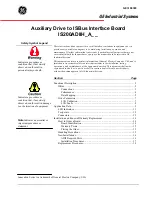
75
Setting the spanning tree mode
The spanning tree modes include:
•
STP
mode
—All ports of the device send STP BPDUs. Select this mode when the peer device
of a port supports only STP.
•
RSTP
mode
—All ports of the device send RSTP BPDUs. A port in this mode automatically
transits to the STP mode when it receives STP BPDUs from the peer device. A port in this mode
does not transit to the MSTP mode when it receives MSTP BPDUs from the peer device.
•
PVST
mode
—All ports of the device send PVST BPDUs. Each VLAN maintains a spanning
tree. In a network, the amount of spanning trees maintained by all devices equals the number of
PVST-enabled VLANs multiplied by the number of PVST-enabled ports. If the amount of
spanning trees exceeds the capacity of the network, device CPUs will be overloaded. Packet
forwarding is interrupted, and the network becomes unstable.
•
MSTP
mode
—All ports of the device send MSTP BPDUs. A port in this mode automatically
transits to the STP mode when receiving STP BPDUs from the peer device. A port in this mode
does not transit to the RSTP mode when receiving RSTP BPDUs from the peer device.
The MSTP mode is compatible with the RSTP mode, and the RSTP mode is compatible with the STP
mode.
Compatibility of the PVST mode depends on the link type of a port.
•
On an access port, the PVST mode is compatible with other spanning tree modes in all VLANs.
•
On a trunk port or hybrid port, the PVST mode is compatible with other spanning tree modes
only in VLAN 1.
To set the spanning tree mode:
Step Command
Remarks
1.
Enter system view.
system-view
N/A
2.
Set the spanning tree mode.
stp mode
{
mstp
|
pvst
|
rstp
|
stp
}
The default setting is the
MSTP mode.
Configuring an MST region
Spanning tree devices belong to the same MST region if they are both connected through a physical
link and configured with the following details:
•
Format selector (0 by default, not configurable).
•
MST region name.
•
MST region revision level.
•
VLAN-to-instance mapping entries in the MST region.
The configuration of MST region-related parameters (especially the VLAN-to-instance mapping table)
might cause MSTP to begin a new spanning tree calculation. To reduce the possibility of topology
instability, the MST region configuration takes effect only after you activate it by doing one of the
following:
•
Use the
active region-configuration
command.
•
Enable a spanning tree protocol by using the
stp global enable
command if the spanning tree
protocol is disabled.
In STP, RSTP, or PVST mode, MST region configurations do not take effect.
To configure an MST region:
Summary of Contents for H3C S7500E-X
Page 70: ...57 ...














































